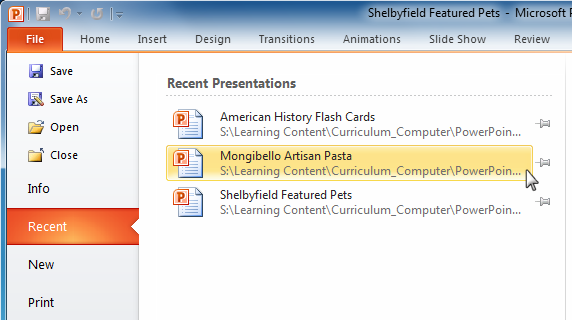Introduction-
PowerPoint 2010 is a presentation software that allows you to create dynamic slide presentations that can include animation, narration, images, and videos.
Navigating PowerPoint to create a slide presentation
PowerPoint uses slides to build a presentation. To create an engaging presentation, PowerPoint allows you to add text, bulleted lists, images, charts, and video to your slides. You can add as many slides as you want to a presentation.
Scroll bar
You can also navigate your slide show by clicking and dragging the scroll bar or by selecting the Previous Slide and Next Slide arrows.

Working with your PowerPoint environment
The Ribbon and Quick Access toolbar are where you will find the commands you need to perform common tasks in PowerPoint.
The Ribbon
The Ribbon contains multiple tabs, each with several groups of commands. Some tabs, like Drawing Tools or Table Tools, may appear only when you are working with certain items like images or tables. In addition, you can add your own customized tabs that contain your favorite commands.

To customize the Ribbon:
You can customize the Ribbon by creating your own tabs that house your desired commands. Commands are always housed within a group, and you can create as many groups as you need to keep your tabs organized.
- Right-click the Ribbon, and select Customize the Ribbon. A dialog box will appear.

- Click New Tab. A new tab will be created with a new group inside it.
- Make sure the new group is selected.
- Select a command from the list on the left, then click Add. You can also drag commands directly into a group.
- When you are done adding commands, click OK.
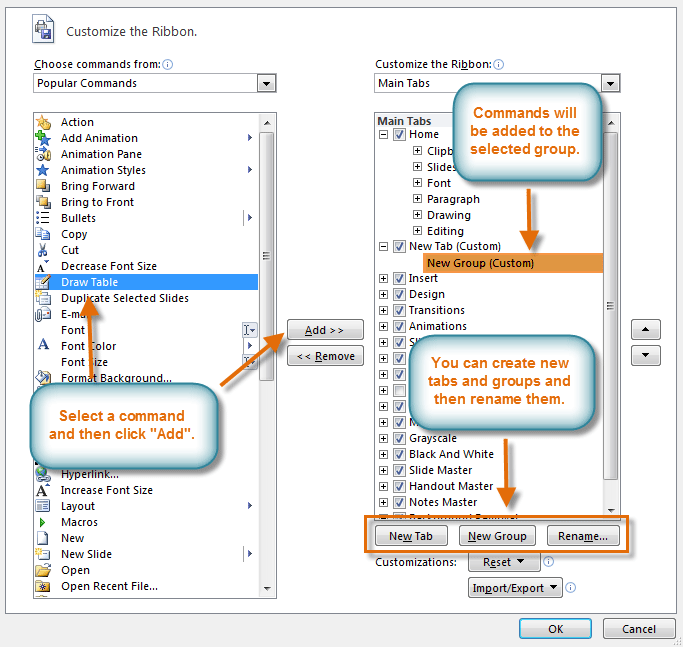
If you do not see the command you want, click on the Choose commands drop-down box and select All Commands.
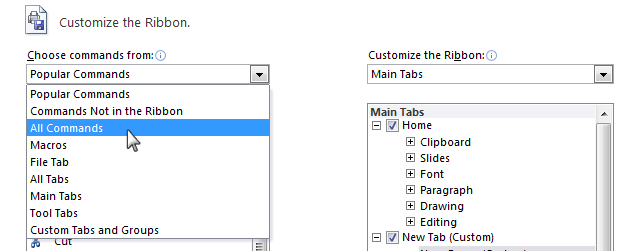
To minimize and maximize the Ribbon:
The Ribbon is designed to be easy to use and responsive to your current task; however, if you find it is taking up too much of your screen space, you can minimize it.
- Click the arrow in the upper-right corner of the Ribbon to minimize it.
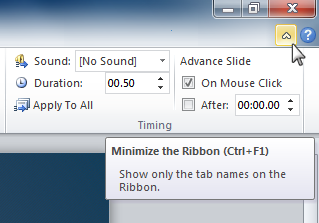
- To maximize the Ribbon, click the arrow again.
When the Ribbon is minimized, you can make it reappear by clicking a tab. However, the Ribbon will disappear again when you are not using it.
The Quick Access toolbar
The Quick Access toolbar, located above the Ribbon, lets you access common commands no matter which tab you are on. By default, it shows the Save, Undo, and Repeat commands. You can add other commands to make it more convenient.
To add commands to the Quick Access toolbar:
- Click the drop-down arrow to the right of the Quick Access toolbar.
- Select the command you want to add from the drop-down menu. To choose from more commands, select More Commands.
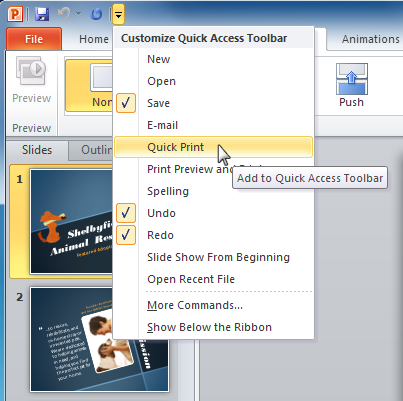
Backstage view
Backstage view gives you various options for saving, opening, printing, and sharing your presentation.
To get to Backstage view:
- Click the File tab.
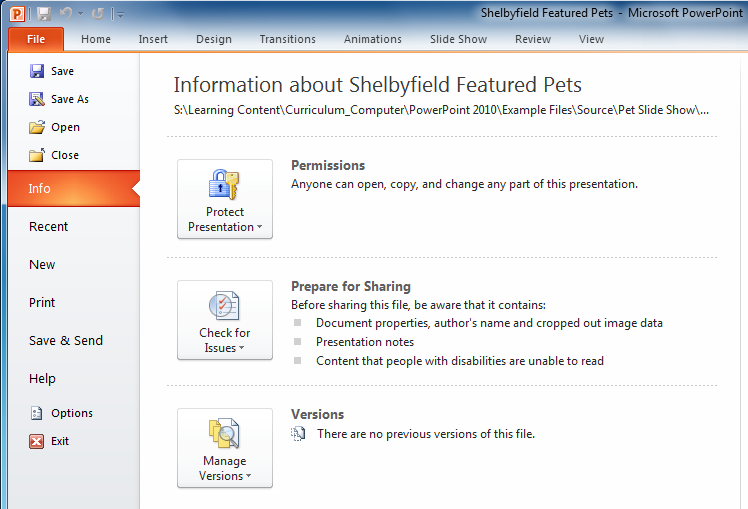
- You can choose an option on the left side of the page.
- To get back to your document, click any tab on the Ribbon.
Creating and opening presentations
PowerPoint files are called presentations. When you start a new project in PowerPoint, you’ll need to create a new presentation. You’ll also need to know how to open an existing presentation.
To create a new blank presentation:
- Click the File tab. This takes you to Backstage view.
- Select New.
- Select Blank presentation under Available Templates and Themes. It will be highlighted by default.
- Click Create. A new blank presentation appears in the PowerPoint window.
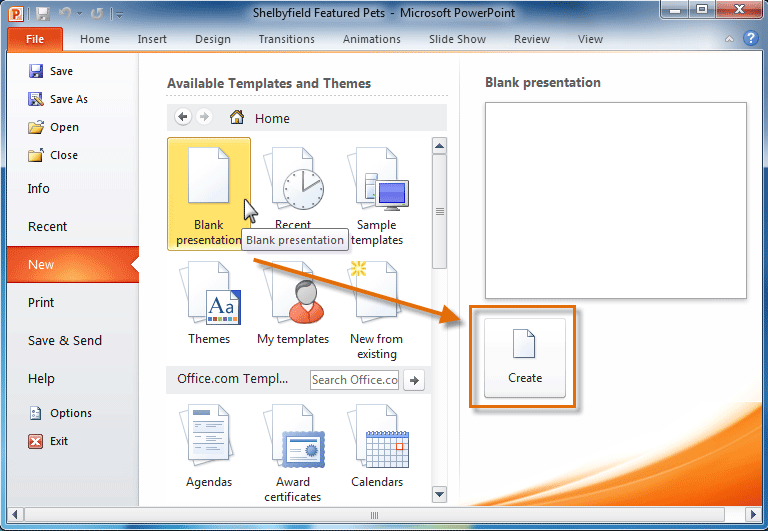
To save time, you can create your presentation from an Office.com template, which you can also select under Available Templates and Themes.
To open an existing presentation:
- Click the File tab. This takes you to Backstage view.
- Select Open. The Open dialog box appears.
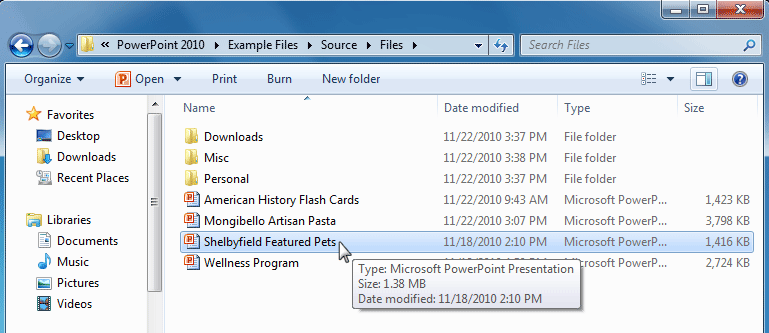
- Select your desired presentation, then click Open.
If you have opened the existing presentation recently, it may be easier to choose Recent from the File tabinstead of Open to search for your presentation.
